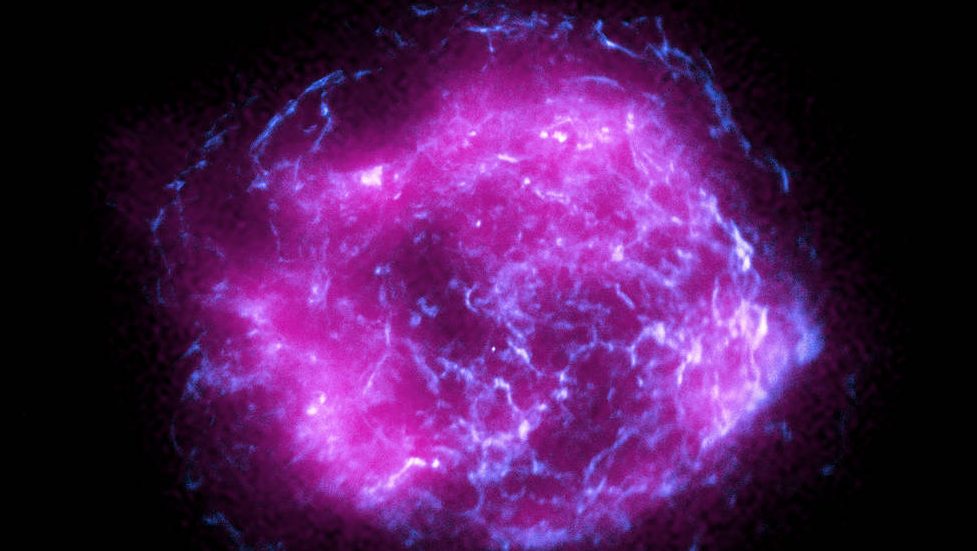The US space agency, NASA, has released the first scientific images taken by the new X-ray Imaging Explorer (IXPE), which was released on December 9, 2021. The spacecraft studies polarized X-rays from various extreme and mysterious cosmic sources.
In December 2021, NASA launched the IXPE space telescope. The spacecraft calibrated its instrumentation for a month and adapted it to the space environment. When it was ready to collect data, the mission leaders pointed their mirrors at a supernova called Cassiopeia A – the remnants of a vibrating gas cloud from a star that exploded in the 17th century. Writes Business Insider.
NASA’s new X-ray Space Telescope has captured its first image showing the pulsating electromagnetic glow of a supernova explosion.
The first photo was released on Monday. The gas cloud is about ten light years across. It doesn’t really glow in the stunning purple shown above. NASA researchers chose this color to show how strong the X-ray light is in different parts of the cloud.
for us #IXPE The observatory sent its first scientific image: Cassiopeia A – the remnant of a star that exploded 11,000 light-years from Earth.
The supernova remnants are shown here in X-ray data from IXPE and Tweet embed: https://t.co/Y9R8RPv2Pa pic.twitter.com/f0nj4BIEvn
– NASA (@NASA) February 14, 2022
In the image below, a wider range of colors were used to show the differences in the X-rays.
 (NASA photo)
(NASA photo)The beautiful Cassiopeia A remnant is about 11,000 light-years from Earth. Light from the supernova first reached Earth in the 1770s.
IXPE is a joint mission of NASA and the Italian Space Agency to study high-energy space objects, including black holes, neutron stars, pulsars, supernova remnants, magnets, quasars and galaxy clusters by observing with polarized X-rays. He writes in a statement to NASA.
Cassiopeia A is the first of 40 objects IXPE is studying in its first year. In addition to exploring supernovae, the mission can answer questions about things like black holes, including how they rotate and whether the black hole at the center of our Milky Way has been fed by surrounding material.
IXPE is set to spend at least two years studying the most extreme and mysterious things in the universe. This is NASA’s first major X-ray space telescope since Chandra X-rays entered orbit. Chandra blasted off in 1999 and targeted Cassiopeia Att, revealing the presence of a black hole or neutron star in the middle of the supernova remnant. The first telescope recording was also captured by Cassiopeia At.
“Cassiopeia The IXPE image is as historic as Chandra’s image of the same supernova remnant. This demonstrates that IXPE has access to unprecedented new information about Cassiopeia A, which is currently under analysis.Weisskov, IXPE Team Leader for NASA, said in a press release.












































